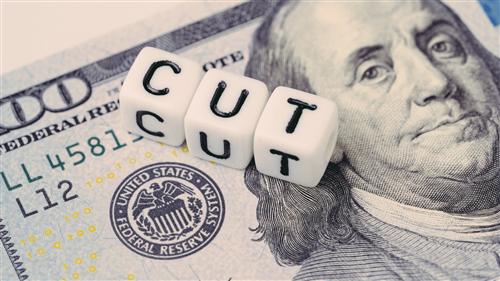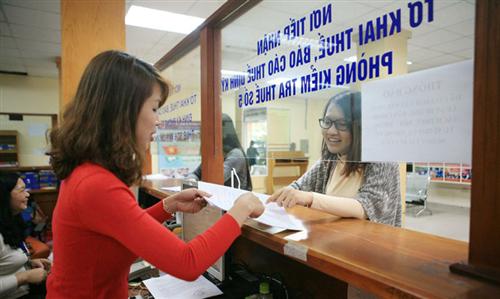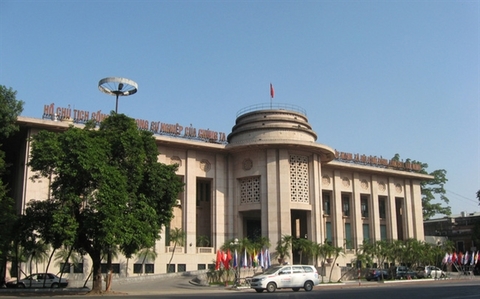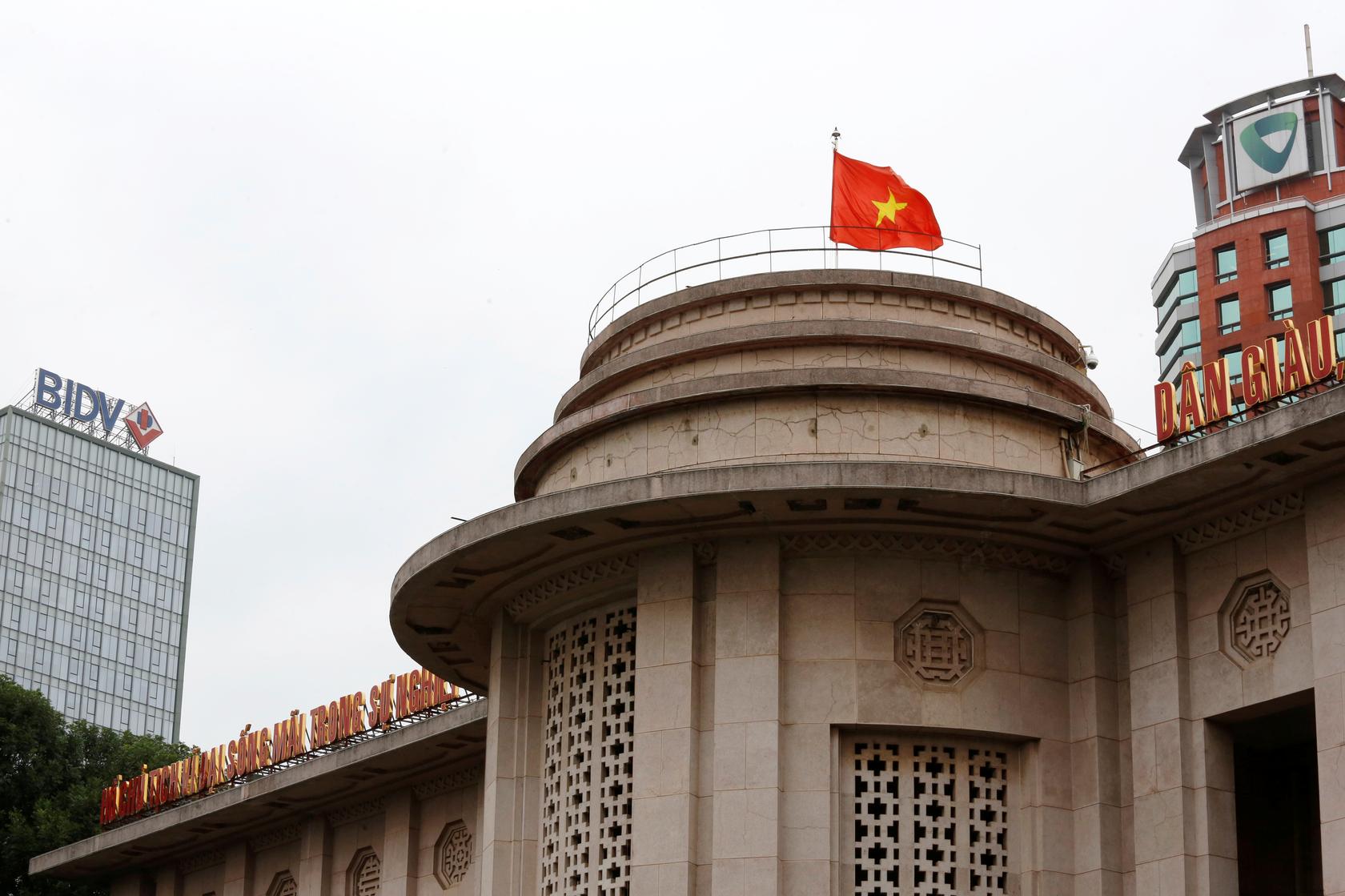Central bank’s new relief measures to mitigate damage
Central bank’s new relief measures to mitigate damage
The State Bank of Vietnam might reduce policy rates coupled with credit packages, as relief measures to limit financial problems resulting from the COVID-19 outbreak.
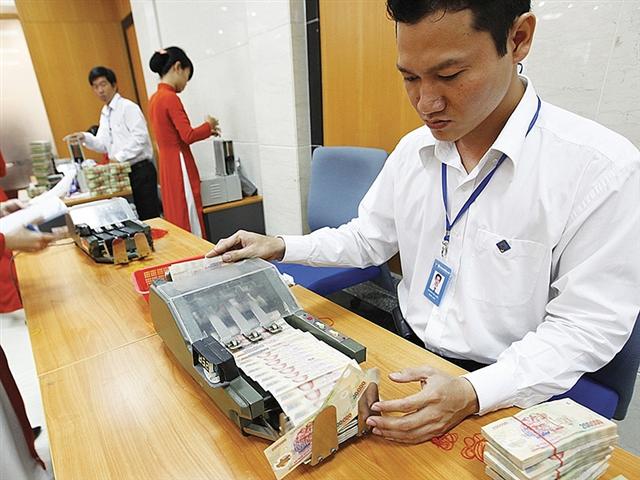
Central bank’s new relief measures to mitigate damage, photo Le Toan
|
Last week, the State Bank of Vietnam (SBV) officially announced a freshly-adopted circular taking effect from March 12 on loan repayment restructuring, and rates exemption and reduction to mitigate the damage caused by the ongoing health crisis.
Firms who wish to enjoy the preferential package should satisfy three requirements. These include an outstanding balance arising from lending and financial leasing, or an inability to pay debts due to market volatility.
Banks are being called upon to take timely action to ward off any signs of weak economic growth.
The SBV’s movement has mustered a similarly synchronised response from other central banks, such as the Bank of England slashing their key interest rates and allowing lenders to extend almost $387 billion in new loans. In Italy, the centre of the pandemic in Europe, the government has taken bolder fiscal steps, saying it had earmarked up to $28 billion to help the ailing economy and struggling healthcare sector. Malaysia’s central bank trimmed its key policy interest rate to a nine-year low, together with a $4.8 billion fiscal stimulus.
The Reserve Bank of Australia also reduced interest rates by a quarter percentage point to a record-low 0.5 per cent after the virus began to choke key exports, including foreign education and tourism.
Market jitters are by no means eased if banks are not held accountable to act aggressively by tolerance to soured loans or slashing their lending rates to support affected firms, as cited by Deputy Governor of the SBV Dao Minh Tu.
“Focus must be placed on the most vulnerable sectors such as logistics, tourism, agriculture, and exports so measures can be put in place,” said the SBV’s Governor Le Minh Hung.
Hung also said that credit growth for the first two months of the year stood at a meagre 0.1 per cent on-year – much lower than the previous 0.85 per cent of the same period last year.
On the other hand, loan surplus to sectors hit by COVID-19 has reached VND925 trillion ($40.2 billion), equal to 11 per cent of the banking sector’s total outstanding loan balance.
This is not the first time the SBV has pledged initiatives to bolster businesses. Last month, Vietnamese regulators asked banks to provide extra support, such as extending loans to combat the outbreak.
The central bank also allocated a credit support programme worth VND250 trillion ($10.9 billion) to be developed by more than 10 banks, including the four state-owned commercial giants Vietcombank, BIDV, Agribank, and VietinBank.
So far, financial institutions have restructured outstanding loans of VND21.8 trillion ($947.8 million). Moreover, they also slashed lending rates for more than 8,000 clients with a loan balance of VND350 trillion ($15.2 billion), and are mulling over providing support to 34,500 more customers with outstanding loans of VND185 trillion ($8 billion).
The decision to lower rates and extend tolerance to loans reflect fears of an immediate pullback in growth as well as concerns about the firms’ inability to generate more revenue amidst the contagion.
As such, a handful of commercial banks introduced their stimulus packages to counteract the adverse impact before the SBV’s announcement.
BIDV has stepped up a support package worth VND120 trillion ($5.2 billion). Meanwhile, Agribank, MB, and ACB have also unveiled relief measures, respectively valued at VND100 billion ($4.4 million), VND35 trillion ($1.5 billion), and VND15 trillion ($652 million).
Kien Long Bank cut its lending rates to 3 per cent to support customers in growing dragon fruit, watermelons, durian, jackfruit, mangoes, rambutan, and bananas.
SHB customers are entitled to a reduction in lending rates of up to 1.5 per cent annually for loans in VND and 0.5 per cent per year for USD loans.
Sacombank has rolled out a credit package of VND10 trillion ($434.8 million) with lending rates slashed by 2 per cent for affected customers.
Eximbank earmarked VND4 trillion ($173.9 million) to lend to small- and medium-sized enterprises with concessionary rates from 6.99 per cent per annum.
State-owned lender Vietcombank also estimates that the scale of loans enjoying preferential lending rates could be around VND30 trillion ($1.3 billion). With about 300 customers who are large-cap businesses, the rate reduction comes to about VND300-450 billion ($13-19.6 million).
Meanwhile ABBank has launched a loan support package totalling VND4 trillion ($173.9 million) at low lending rates for affected businesses. It has also conducted a review of its credit portfolio, especially accounts of enterprises with trade relations with China, and will offer them timely advice via phone or email.
“We are thinking about rescheduling debt payments and cutting rates for our clients, though these loans are due at the moment,” said Phan Dinh Tue, deputy general director at Sacombank.
Nguyen Minh Cuong, principal country economist of the Asian Development Bank in Vietnam, told VIR in a previous interview that it is quite necessary for the government to provide fiscal support for people now. However, it is also important that the nature of the support package is defined.
Nguyen Tien Hung, head of SBV’s credit department, emphasised that the banking sector would guarantee sufficient capital for the economy during and after the pandemic. In the forthcoming time, the scale of the credit package might be larger depending on the specific circumstances. Commercial banks would self-balance their own financial situations.
Through the new circular, the SBV will accommodate favourable mechanisms for lenders to be proactive in handling and restructuring non-performing loans.









